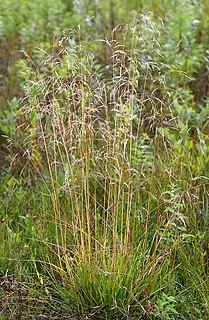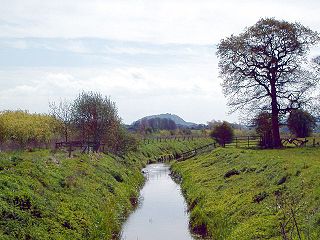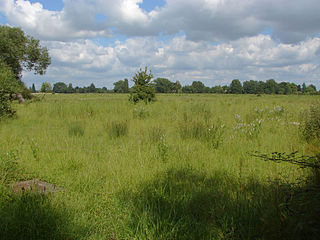| Gowy Meadows Nature Reserve | |
|---|---|
 River Gowy within the reserve | |
Gowy Meadows NR within Cheshire | |
| Type | Nature reserve |
| Location | near Thornton-le-Moors, Cheshire |
| OS grid | SJ435740 |
| Coordinates | 53°15′37″N2°50′52″W / 53.2604°N 2.8477°W Coordinates: 53°15′37″N2°50′52″W / 53.2604°N 2.8477°W |
| Area | 165.80 hectares (409.7 acres) [1] |
| Elevation | 5 metres (16 ft) [2] |
| Established | 2002 [3] |
| Operated by | Cheshire Wildlife Trust |
| Open | at all times |
Gowy Meadows Nature Reserve is a 165.8-hectare (410-acre) [1] nature reserve near Ellesmere Port, Cheshire, England. [2] It consists of low-lying meadows immediately to the east of the River Gowy near its confluence with the River Mersey, south of Stanlow Oil Refinery and west of the village of Thornton-le-Moors (from where a public footpath follows Thornton Brook across the site). It is managed by the Cheshire Wildlife Trust on behalf of the landowner, Shell UK, [4] and was founded in 2002. [3] The M56 motorway runs along the southern edge of the reserve. [2]

A nature reserve may also be known as a natural reserve, wildlife refuge or sanctuary, biosphere reserve (bioreserve), natural or nature preserve, or nature conservation area. It is a protected area of importance for flora, fauna, or features of geological or other special interest, which is reserved and managed for purposes of conservation and to provide special opportunities for study or research. Nature reserves may be designated by government institutions in some countries, or by private landowners, such as charities, and research institutions. Nature reserves fall into different IUCN categories depending on the level of protection afforded by local laws. Normally it is more strictly protected than a nature park. Various jurisdictions may use other terminology, such as ecological protection area or private protected area in legislation and in reserves' official names.

Ellesmere Port is a town and port in Cheshire, England, part of the Cheshire West and Chester local authority, 6 miles (9.7 km) north of Chester and 11 miles (18 km) south of Liverpool. The town had a population of 55,715 in 2011.

Cheshire is a county in North West England, bordering Merseyside and Greater Manchester to the north, Derbyshire to the east, Staffordshire and Shropshire to the south, and Flintshire and Wrexham County Borough in Wales to the west. Cheshire's county town is the City of Chester (118,200); the largest town is Warrington (209,700). Other major towns include Crewe (71,722), Ellesmere Port (55,715), Macclesfield (52,044), Runcorn (61,789), Widnes (61,464) and Winsford (32,610), Northwich (19,924)
The reserve consists mainly of low-lying wet pasture divided by ditches. It is part of the Gowy & Mersey Washlands Living Landscape initiative. [5] Before the construction of the Manchester Ship Canal the Gowy would have been tidal in this area and much of the reserve would have consisted of saltmarsh with brackish creeks, whose traces can still be seen in places. [4]

The Manchester Ship Canal is a 36-mile-long (58 km) inland waterway in the North West of England linking Manchester to the Irish Sea. Starting at the Mersey Estuary near Liverpool, it generally follows the original routes of the rivers Mersey and Irwell through the historic counties of Cheshire and Lancashire. Several sets of locks lift vessels about 60 feet (18 m) up to Manchester, where the canal's terminus was built. Major landmarks along its route include the Barton Swing Aqueduct, the only swing aqueduct in the world, and Trafford Park, the world's first planned industrial estate and still the largest in Europe.
























